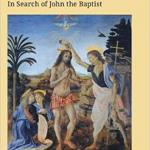Jason BeDuhn’s book, The First New Testament: Marcion’s Scriptural Canon, offers both a reconstruction of the text of Marcion’s Gospel and Apostolikon (a collection of letters of Paul which corresponds to those judged authentic by modern scholars), and a discussion of the relevant scholarly matters and their implications.
Scholars of the New Testament should not miss the discussion of the relevance of Marcion’s version of Luke to the Synoptic problem. Marcion’s version, BeDuhn argues, was not truncated by Marcion for ideological reasons, as various church fathers claimed, since “for every single motive cited for why a passage was omitted, one can find a passage of equivalent content that was not” (p.83). Marcion’s version is thus better viewed as an independent variant of Luke’s Gospel, deriving from the same precursor (pp.86-92). BeDuhn also notes that many of the minor agreements between Matthew and Luke are absent from Marcion’s Gospel, as are the very small number of narrative episodes they share in the Q material. And so, rather than treating those as counter-evidence to the Q hypothesis, they should be explained as scribal harmonizations between Matthew and Luke (pp.93-95).
From the perspective of my own current work on the Mandaean Book of John, I am particularly interested in the possibility that Luke 1:1-2:52 might have been subsequently added to a proto-Lukan Gospel. The Mandaean Book of John has its own stories about Zechariah and Elizabeth, which look like independent but distantly related accounts when compared to the infancy stories in Luke. It isn’t clear how these puzzle pieces fit together, and the possibility that a second hand was involved in crafting the Lukan version doesn’t make the matter either simpler or more difficult to figure out – it just adds to the range of possibilities.
Of interest to all researchers, I turned to my library’s databases to try to get hold of an article mentioned in a footnote in the book, F. C. Conybeare’s “Ein Zeugnis Ephräms über das Fehlen von c. 1 und 2 im Texte des Lucas” published in ZNW 3 (1902) 192-197. Databases were unhelpful, and an initial glance online led me to DeGruyter’s website asking a hefty fee for access. But it soon became clear that the issue of Zeitschrift Fur Die Neutestamentliche Wissenschaft was on Google Books for free. Sometimes it makes sense to start with Google and the freely-accessible web, and then turn to databases and specialized searches subsequently as necessary.













